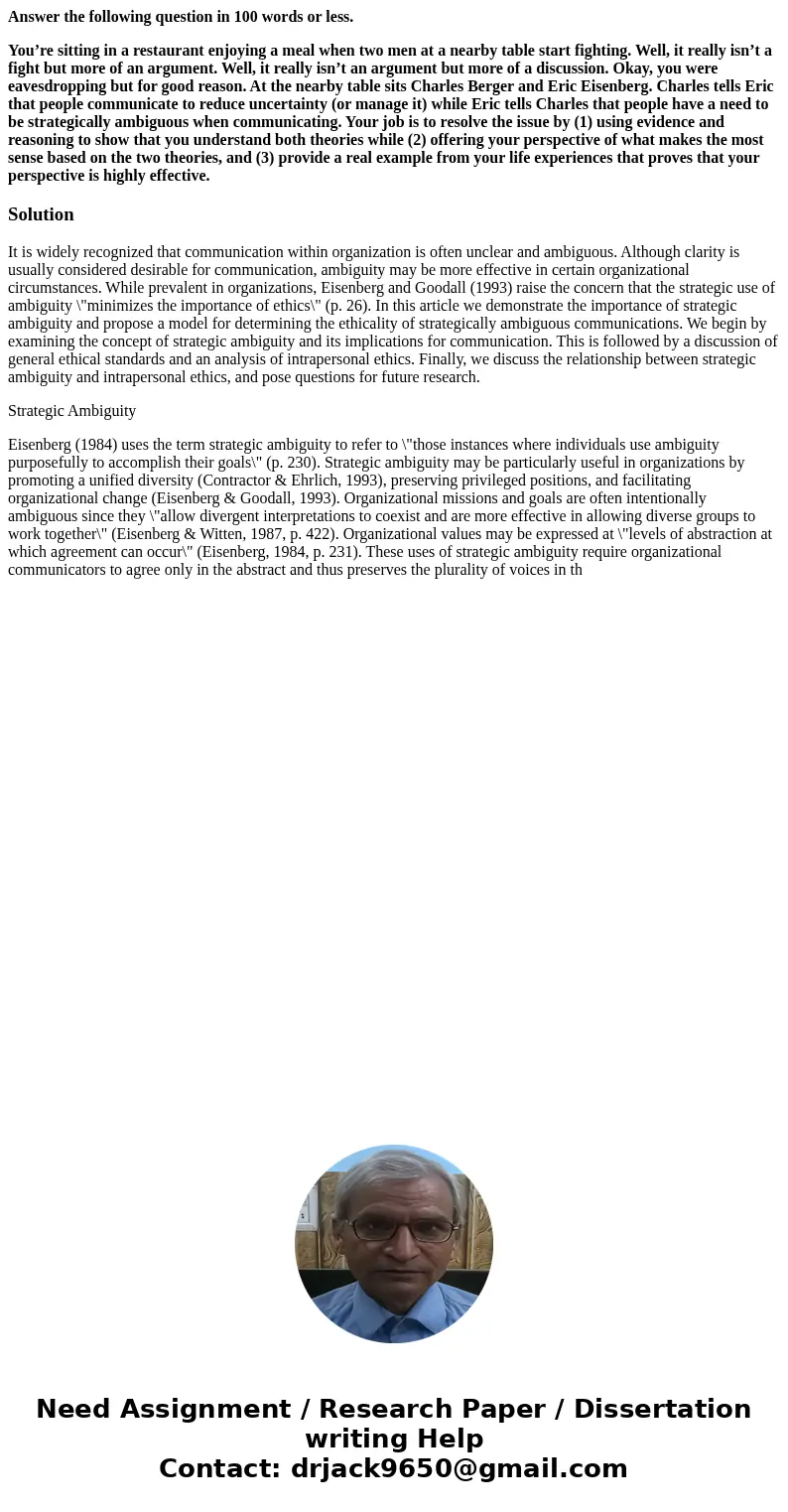Answer the following question in 100 words or less Youre sit
Answer the following question in 100 words or less.
You’re sitting in a restaurant enjoying a meal when two men at a nearby table start fighting. Well, it really isn’t a fight but more of an argument. Well, it really isn’t an argument but more of a discussion. Okay, you were eavesdropping but for good reason. At the nearby table sits Charles Berger and Eric Eisenberg. Charles tells Eric that people communicate to reduce uncertainty (or manage it) while Eric tells Charles that people have a need to be strategically ambiguous when communicating. Your job is to resolve the issue by (1) using evidence and reasoning to show that you understand both theories while (2) offering your perspective of what makes the most sense based on the two theories, and (3) provide a real example from your life experiences that proves that your perspective is highly effective.
Solution
It is widely recognized that communication within organization is often unclear and ambiguous. Although clarity is usually considered desirable for communication, ambiguity may be more effective in certain organizational circumstances. While prevalent in organizations, Eisenberg and Goodall (1993) raise the concern that the strategic use of ambiguity \"minimizes the importance of ethics\" (p. 26). In this article we demonstrate the importance of strategic ambiguity and propose a model for determining the ethicality of strategically ambiguous communications. We begin by examining the concept of strategic ambiguity and its implications for communication. This is followed by a discussion of general ethical standards and an analysis of intrapersonal ethics. Finally, we discuss the relationship between strategic ambiguity and intrapersonal ethics, and pose questions for future research.
Strategic Ambiguity
Eisenberg (1984) uses the term strategic ambiguity to refer to \"those instances where individuals use ambiguity purposefully to accomplish their goals\" (p. 230). Strategic ambiguity may be particularly useful in organizations by promoting a unified diversity (Contractor & Ehrlich, 1993), preserving privileged positions, and facilitating organizational change (Eisenberg & Goodall, 1993). Organizational missions and goals are often intentionally ambiguous since they \"allow divergent interpretations to coexist and are more effective in allowing diverse groups to work together\" (Eisenberg & Witten, 1987, p. 422). Organizational values may be expressed at \"levels of abstraction at which agreement can occur\" (Eisenberg, 1984, p. 231). These uses of strategic ambiguity require organizational communicators to agree only in the abstract and thus preserves the plurality of voices in th

 Homework Sourse
Homework Sourse